|
Rispondi |
Messaggio 1 di 140 di questo argomento |
|
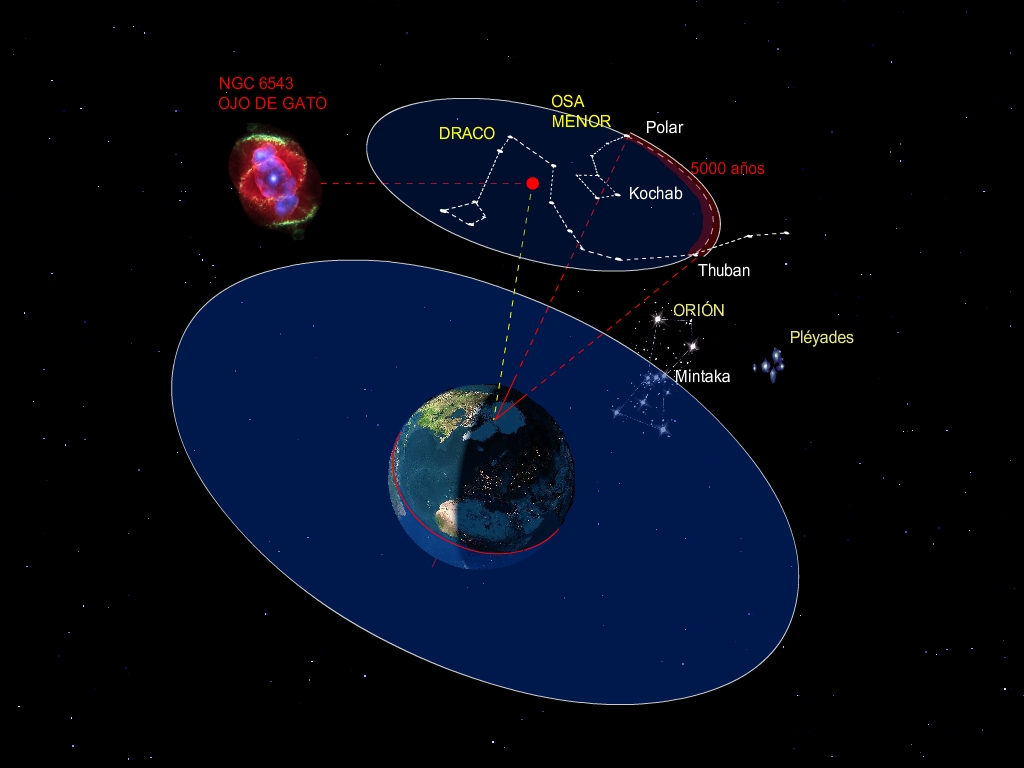
Nebulosa Ojo de Gato
De Wikipedia, la enciclopedia libre
La nebulosa Ojo de Gato (NGC 6543) es una nebulosa planetaria en la constelación del Dragón. Estructuralmente es una de las nebulosas más complejas conocidas, en la que las imágenes de muy alta resolución del Telescopio Espacial Hubble han mostrado notables estructuras como nudos, chorros de material, burbujas y estructuras en forma de arco.
Fue descubierta por William Herschel el 15 de febrero de 1786 y fue la primera nebulosa planetaria cuyo espectro fue investigado, siendo esta labor realizada por el astrónomo William Huggins en 1864.
Los estudios modernos revelan una naturaleza compleja con intrincadas estructuras que podrían estar causadas por material eyectado por una binaria acompañando a la estrella central. Sin embargo no hay evidencias directas de la presencia de dicha compañera estelar. Además las medidas de las abundancias de elementos químicos obtenidas por diferentes métodos presentan una importante discrepancia entre sí, indicando que hay aspectos de esta nebulosa que permanecen todavía sin ser comprendidos.
Información general
NGC 6543 es una nebulosa planetaria muy estudiada. Es relativamente brillante con una magnitud aparente de 8.1, y también con una temperatura de brillo poco estructural elevada. Se encuentra en las coordenadas de ascensión recta 17h 58.6m y declinación +66°38'. La alta declinación significa que es fácilmente observable desde el hemisferio norte, donde la mayoría de los grandes telescopios han sido construidos. Curiosamente se halla en el polo N de la eclíptica del Sistema Solar, por lo que las representaciones que muestran cómo se vería éste desde "arriba" muestran cómo se vería desde allí[5]
Mientras que la nebulosa interior más brillante tiene un tamaño relativamente reducido de 20 segundos de arco de diámetro, posee un halo extenso con material eyectado de la estrella central durante la etapa de gigante roja. El halo se extiende unos 386 segundos de arco (6,4 minutos de arco).
Las observaciones muestran que el cuerpo principal de la nebulosa tiene una densidad de unas 5000 partículas/cm³ y una temperatura de 8.000 K 1. El halo exterior tiene una temperatura algo superior de 15.000 K y una densidad muy inferior.
La estrella central en NGC 6543 es una estrella de tipo espectral O con una temperatura en la fotosfera de 80.000 K. Su brillo es aproximadamente 10.000 veces más luminosa que el Sol con un radio de 0,65 el radio solar. Diversos análisis espectroscópicos muestran que la estrella pierde masa rápidamente por un fuerte viento estelar a un ritmo de 3,2×10−7 masas solares por año - 20 trillones de t/s. La velocidad de este viento de partículas es de 1900 km/s. Los cálculos y modelos teóricos indican que la estrella central posee actualmente una masa solar pero los cálculos de su evolución teórica implican una masa inicial de 5 masas solares2.
[editar] Observaciones
Mediante prismáticos de 9x63, con un cielo de magnitud límite aproximada de +5,2, este objeto se puede observar con un ligero efecto de parpadeo y un punto con forma estelar, quizás algo desenfocado, como toda nebulosa planetaria.
Con unos prismáticos de 10x50 posee un aspecto de una estrella desenfocada, siempre bajo cielos limpios y sin polucionar.
[editar] Observaciones infrarrojas
Las observaciones de NGC 6543 en longitudes de onda infrarrojas muestran la presencia de una polvo estelar y gas a baja temperatura. Se piensa que el polvo se formó en las últimas fases de la vida de la estrella progenitora. Este polvo absorbe luz de la estrella central reemitiendo la energía en longitudes infrarrojas. El espectro de emisión infrarrojo permite deducir temperaturas de 70 K.
Las emisiones infrarrojas revelan la presencia de material no ionizado como hidrógeno molecular (H2). En muchas nebulosas planetarias la emisión molecular es mayor a distancias mayores de la estrella donde el material deja de estar ionizado. En el caso de NGC 6543 la emisión de hidrógeno es más intensa en el límite interior del halo exterior. Esto es posiblemente debido a ondas de choque excitando el H2 a medida que impactan a diferente velocidad con el halo.3
[editar] Observaciones ópticas y ultravioletas
NGC 6543 ha sido extensamente observada en el ultravioleta y en las longitudes de onda del visible. Las observaciones espectroscópicas en estas longitudes de onda permiten determinar las abundancias de diferentes especies químicas, así como intrincadas estructuras de la nebulosa.
La imagen en falso color del HST resalta las regiones de alta y baja concentración de iones. Tres imágenes fueron tomadas en filtros que aislaban la luz emitida por iones de hidrógeno en 656.3 nm, nitrógeno ionizada en 658.4 nm y oxígeno doblemente ionizado en 500.7 nm. Las imágenes fueron combinadas en canales rojo, verde y azul respectivamente. La imagen revela dos capas de material menos ionizado en los límites de la nebulosa.
[editar] Observaciones en rayos X
El Observatorio de rayos X Chandra ha revelado la presencia de gas extremadamente caliente alrededor de NGC 6543. Se cree que el gas caliente es producido por la violenta interacción entre el viento estelar y el material expulsado anteriormente. Esta interacción ha vaciado en gran medida el interior de la nebulosa dejando un espacio menos denso en forma de burbuja.
Las observaciones de Chandra han revelado también una fuente puntual de intensos rayos X en la posición de la estrella. Ésta no debería emitir tan intensamente en esta longitud de onda por lo que el elevado flujo de rayos X resulta algo misteriosa. Una posibilidad interesante es que los rayos X podrían ser producidos en un hipotético disco de acreción alrededor del sistema binario4.
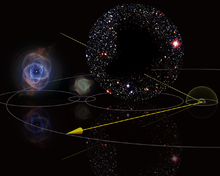
La expansión radial de NGC 6543 a lo largo de varios años puede ser utilizada para calcular su distancia.
Las distancias a las nebulosas planetarias no son tan fáciles de identificar como en el caso de algunas estrellas. Muchos de los métodos utilizados para estimar estas distancias se basan en hipótesis generales que pueden ser inadecuadas para el objeto específico bajo estudio.
El ritmo de expansión angular de la nebulosa puede ser utilizado para estimar la edad de ésta. Si la expansión ha procedido a ritmo constante, para alcanzar un diámetro de 20 segundos de arco a un ritmo de 10 milisegundos de arco por año, la nebulosa se habría formado hace unos 1000 años5. Probablemente esta edad es solo un límite superior ya que el material expulsado podría haberse desplazado a mayor velocidad en el pasado siendo frenado por su interacción con el medio interestelar.
[editar] Composición química

Imagen de NGC 6543 procesada fuertemente para mostrar estructuras en forma de anillo envolviendo la nebulosa central. También visibles son diversas estructuras lineales causas posiblemente por la precesión de chorros de eyección en el sistema binario.
Como la mayoría de los objetos astronómicos NGC 6543 está formada sobre todo por hidrógeno y helio, con elementos pesados tan solo presentes en pequeñas cantidades. La composición exacta puede ser estudiada mediante el análisis espectroscópico de la luz procedente de la nebulosa. Las abundancias se expresan generalmente relativas al hidrógeno, el elemento más abundante.
Diferentes estudios indican que la proporción de helio frente al hidrógeno en la nebulosa del Ojo de Gato es de 0.12, el carbono y el nitrógeno tienen abundancias de 3×10−4, y el oxígeno tiene una abundancia de 7×10−4. Estos valores son típicos dentro de las nebulosas planetarias con concentraciones de carbono, nitrógeno y oxígeno más abundantes que en una estrella como el Sol debido a los efectos de la nucleosíntesis que enriquece la atmósfera estelar en elementos pesados que son luego expulsados formando la nebulosa planetaria1,6.
El análisis más detallado muestra que la nebulosa contiene también una pequeña cantidad de material altamente enriquecido en elementos pesados.
[editar] Cinemática y morfología de la nebulosa
NGC 6543 es una nebulosa de gran complejidad estructural. Los mecanismos capaces de moldear todas sus formas no se comprenden con claridad. La porción más brillante interior está causada por la interacción del viento estelar con el material expulsado durante la formación de la nebulosa. En este proceso se emiten gran cantidad de rayos X. El viento estelar vacía de manera inhomogénea el interior de la nebulosa.7
Dado que la estrella central presenta signos de poder ser un sistema binario la interacción entre ambas estrellas contribuye también a moldear las estructuras interiores de la nebulosa. En este caso podría existir un disco de acreción con material fluyendo de una estrella a la otra y con fenómenos de eyección por las regiones polares de la estrella. Estos chorros de eyección estarían sometidos a movimientos de precesión que podría contribuir a formar las estructuras en forma de filamento presentes en la nebulosa.8
Más allá de la nebulosa interior el halo exterior envuelve el sistema en una serie de anillos concéntricos formados en etapas anteriores de la formación de la nebulosa planetaria, cuando la estrella interior estaba en la rama asintótica de las gigantes rojas del diagrama de Hertzsprung-Russell. Los anillos están uniformemente distribuidos por lo que tan solo habría un único mecanismo responsable de su formación a intervalos regulares.9 Más lejos todavía se puede apreciar un halo de material más tenue.
http://es.wikipedia.org/wiki/Nebulosa_Ojo_de_Gato
|
|
|
|
Rispondi |
Messaggio 6 di 140 di questo argomento |
|
|
|
|
Rispondi |
Messaggio 7 di 140 di questo argomento |
|
¿PORQUE CRISTO VIENE COMO LADRON?
CAT/GATO
EL GATO ES LADRON. LA CONSTELACION "OJOS DE GATO" ESTA UBICADA EN LA PARTE SUPERIOR DE LA TIERRA. LA REFERENCIA AL LADRON DE "NUESTRO SEÑOR" ES UN OBVIO NEXO CON LA PRECESION DE LOS EQUINOCCIOS.
|
|
|
|
Rispondi |
Messaggio 8 di 140 di questo argomento |
|
|
|
|
Rispondi |
Messaggio 9 di 140 di questo argomento |
|
Schrödinger Cat eye nebula Ammonia avenue Draconian suicide Alan Parsons project - La Sagrada Familia - Eye in the sky Gaudi Finca Guell Hesperides dragon Barcelona - Cat-a-lonia 4 Cats restaurant The paradox has been the subject of much controversy both scientifically and philosophically, to the point that Stephen Hawking has said, "every time I hear about that cat, I begin to get my gun", referring to the quantum suicide, a variant of the experiment of Schrödinger. http://en.wikipedia.org/wiki/Schr%C3%B6dinger%27s_catSchrödinger's cat is a thought experiment, sometimes described as a paradox, devised by Austrian physicist Erwin Schrödinger in 1935. It illustrates what he saw as the problem of the Copenhagen interpretation of quantum mechanics applied to everyday objects. The scenario presents a cat that might be alive or dead, depending on an earlier random event. Although the original "experiment" was imaginary, similar principles have been researched and used in practical applications. The thought experiment is also often featured in theoretical discussions of the interpretation of quantum mechanics. In the course of developing this experiment, Schrödinger coined the term Verschränkung (entanglement). Origin and motivation Schrödinger intended his thought experiment as a discussion of the EPR article—named after its authors Einstein, Podolsky, and Rosen—in 1935.[1] The EPR article highlighted the strange nature of quantum entanglement, which is a characteristic of a quantum state that is a combination of the states of two systems (for example, two subatomic particles), that once interacted but were then separated and are not each in a definite state. The Copenhagen interpretation implies that the state of the two systems undergoes collapse into a definite state when one of the systems is measured. Schrödinger and Einstein exchanged letters about Einstein's EPR article, in the course of which Einstein pointed out that the state of an unstable keg of gunpowder will, after a while, contain a superposition of both exploded and unexploded states. To further illustrate the putative incompleteness of quantum mechanics, Schrödinger describes how one could, in principle, transpose the superposition of an atom to large-scale systems. He proposed a scenario with a cat in a sealed box, wherein the cat's life or death depended on the state of a subatomic particle. According to Schrödinger, the Copenhagen interpretation implies that the cat remains both alive and dead (to the universe outside the box) until the box is opened. Schrödinger did not wish to promote the idea of dead-and-alive cats as a serious possibility; quite the reverse, the paradox is a classic reductio ad absurdum.[2] The thought experiment illustrates the counterintuitiveness of quantum mechanics and the mathematics necessary to describe quantum states. Intended as a critique of just the Copenhagen interpretation (the prevailing orthodoxy in 1935), the Schrödinger cat thought experiment remains a typical touchstone for all interpretations of quantum mechanics. Physicists often use the way each interpretation deals with Schrödinger's cat as a way of illustrating and comparing the particular features, strengths, and weaknesses of each interpretation. [edit]The thought experiment Schrödinger wrote:[3][2] One can even set up quite ridiculous cases. A cat is penned up in a steel chamber, along with the following device (which must be secured against direct interference by the cat): in a Geiger counter, there is a tiny bit of radioactive substance, so small that perhaps in the course of the hour, one of the atoms decays, but also, with equal probability, perhaps none; if it happens, the counter tube discharges, and through a relay releases a hammer that shatters a small flask of hydrocyanic acid. If one has left this entire system to itself for an hour, one would say that the cat still lives if meanwhile no atom has decayed. The psi-function of the entire system would express this by having in it the living and dead cat (pardon the expression) mixed or smeared out in equal parts. It is typical of these cases that an indeterminacy originally restricted to the atomic domain becomes transformed into macroscopic indeterminacy, which can then be resolved by direct observation. That prevents us from so naively accepting as valid a "blurred model" for representing reality. In itself, it would not embody anything unclear or contradictory. There is a difference between a shaky or out-of-focus photograph and a snapshot of clouds and fog banks. —Erwin Schrödinger, Die gegenwärtige Situation in der Quantenmechanik (The present situation in quantum mechanics), Naturwissenschaften (translated by John D. Trimmer in Proceedings of the American Philosophical Society) Schrödinger's famous thought experiment poses the question, when does a quantum system stop existing as a superposition of states and become one or the other? (More technically, when does the actual quantum state stop being a linear combination of states, each of which resembles different classical states, and instead begins to have a unique classical description?) If the cat survives, it remembers only being alive. But explanations of the EPR experiments that are consistent with standard microscopic quantum mechanics require that macroscopic objects, such as cats and notebooks, do not always have unique classical descriptions. The thought experiment illustrates this apparent paradox. Our intuition says that no observer can be in a mixture of states—yet the cat, it seems from the thought experiment, can be such a mixture. Is the cat required to be an observer, or does its existence in a single well-defined classical state require another external observer? Each alternative seemed absurd to Albert Einstein, who was impressed by the ability of the thought experiment to highlight these issues. In a letter to Schrödinger dated 1950, he wrote: You are the only contemporary physicist, besides Laue, who sees that one cannot get around the assumption of reality, if only one is honest. Most of them simply do not see what sort of risky game they are playing with reality—reality as something independent of what is experimentally established. Their interpretation is, however, refuted most elegantly by your system of radioactive atom + amplifier + charge of gunpowder + cat in a box, in which the psi-function of the system contains both the cat alive and blown to bits. Nobody really doubts that the presence or absence of the cat is something independent of the act of observation.[4] Note that no charge of gunpowder is mentioned in Schrödinger's setup, which uses a Geiger counter as an amplifier and hydrocyanic poison instead of gunpowder. The gunpowder had been mentioned in Einstein's original suggestion to Schrödinger 15 years before, and apparently Einstein had carried it forward to the present discussion.
| Attachments: |

cat eye 1111 gaudi.JPG [ 53.24 KiB | Viewed 597 times ]
|
|
|
|
|
Rispondi |
Messaggio 10 di 140 di questo argomento |
|
|
|
|
Rispondi |
Messaggio 11 di 140 di questo argomento |
|
Laden
(chemistry): In the form of an adsorbate or adduct.
Once laden it is easy to regenerate the adsorbent and retrieve the adsorbed species as a gas.
adduct (plural adducts)
(chemistry) The product of an addition reaction
Ammonia or azane is a compound of nitrogen and hydrogen with the formula NH3. It is a colourless gas with a characteristic pungent odor. Ammonia contributes significantly to the nutritional needs of terrestrial organisms by serving as a precursor to food and fertilizers. Ammonia, either directly or indirectly, is also a building-block for the synthesis of many pharmaceuticals and is used in many commercial cleaning products. Although in wide use, ammonia is both caustic and hazardous. In 2006, worldwide production was estimated at 146.5 million tonnes.[7]
Ammonia solutions should not be mixed with halogens, as toxic and/or explosive products are formed. Prolonged contact of ammonia solutions with silver, mercury or iodide salts can also lead to explosive products: such mixtures are often formed in qualitative chemical analysis[disambiguation needed ], and should be lightly acidified but not concentrated (<6% w/v) before disposal once the test is completed.
Ammonia has been detected in the Draco Nebula and in one or possibly two molecular clouds, which are associated with the high-latitude galactic infrared cirrus. The finding is significant because they may represent the birthplaces for the Population I metallicity B-type stars in the galactic halo that could have been borne in the galactic disk.[77
| Attachments: |

BIN LADON.JPG [ 67.38 KiB | Viewed 560 times ]
|
|
|
|
|
Rispondi |
Messaggio 12 di 140 di questo argomento |
|
|
Rennes Chateau Cropcircles and Metatron Cube
 Posted: Posted: 20 May 2012 5:55 pm |
|
 |
| Acolyte |
Joined: 06 Mar 2012 11:21 pm
Posts: 140 |
 Cat-hars Cat - Aryans Cat-harsis Cat Aryan Isis Catharsis or katharsis (Greek: κάθαρσις) is a Greek word meaning "cleansing" or "purging". It is derived from the verb καθαίρειν, kathairein, "to purify, purge," and it is related to the adjective καθαρός, katharos, "pure or clean." 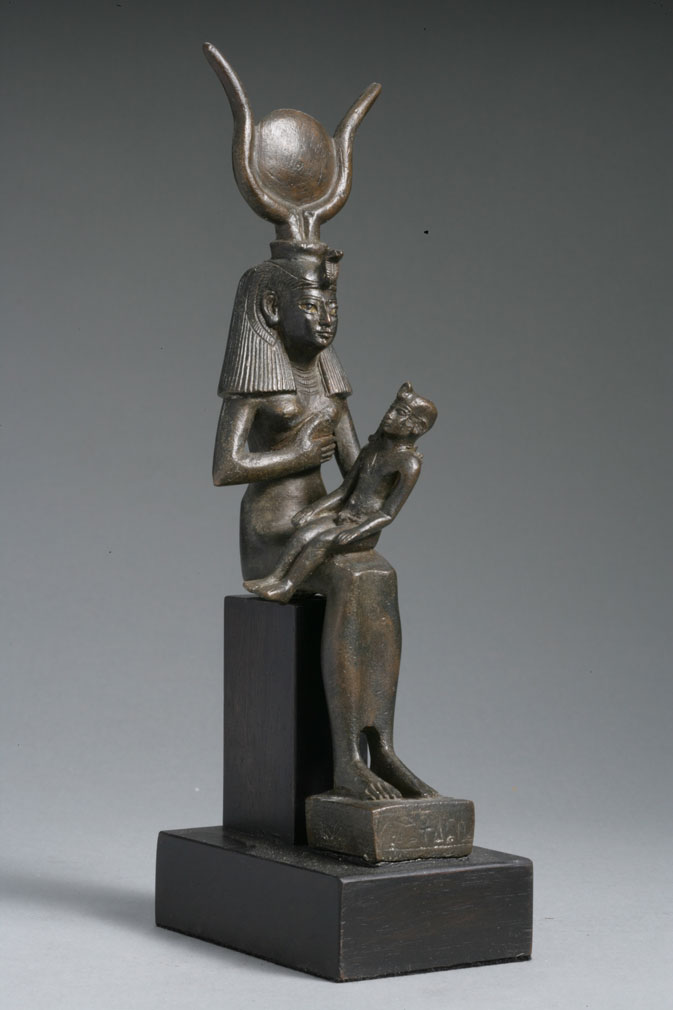
_________________
E.T.A.E
|
|
|
|
|
|
Rispondi |
Messaggio 13 di 140 di questo argomento |
|
|
|
|
Rispondi |
Messaggio 14 di 140 di questo argomento |
|
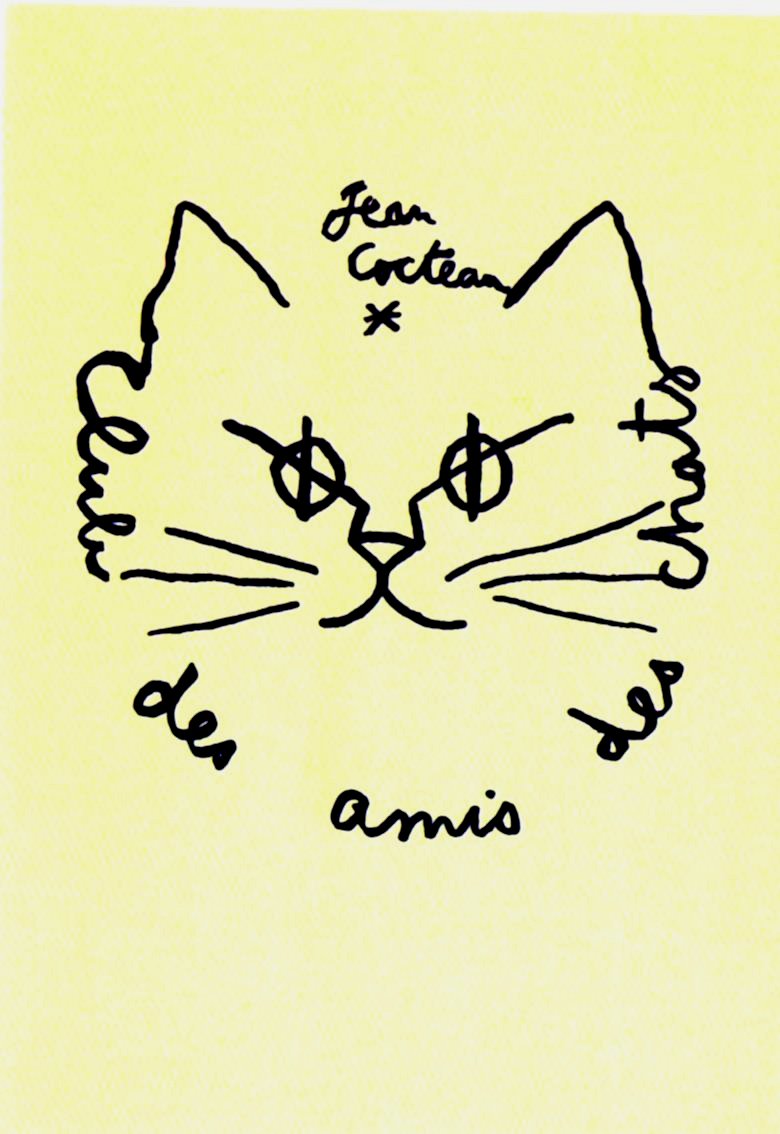 Cocteau 1111 friend Cat club C - A - T 3 - 1 - T Pi-scis ( Vesica ) - Aquarius - Taurus X mark on the eyes - Cat eye nebula and 60 degrees magnetic component of the rhombic dodecahdron hypercube.  Cat black face and white body KA life force of the Galactic center cat eye nebula in Draco constellation. K = 11 = Taurus coordinates A = 1 = Aquarius coordinates Buchis Bull The cult Buchis (Bekh, Bakha, Bakh) was also popular. The bull had a black face and a white body and was thought to be a manifestation of Ka (life-force) of the war god Montu (Montju), worshipped in the region of Hermonthis. The cult was also associated with Ra and to a lesser extent, Osiris. The bull´s name is a reference to the "Ba" and "Akh", two of the parts of the Ka. As Ka is also the Egyptian word for bull. Montju-ic in Barcelona Cat-a-lonia 1111 Ionic colums code The cult was centered around Armant where generations of mummified bulls and their mothers were interred in the "Bucheum". The tombs of the Buchis were similar to those of the Apis, but the structures were topped by vaulted roof rather than carved into the living rock. Some of the tombs contained a large stor of funerary equipment, while others contained only the mummy of the Buchis. Some of the more recent Buchis mummies were interred in the passages which linked the older tombs, and all of the burials date from the Late Period. |
|
|
|
Rispondi |
Messaggio 15 di 140 di questo argomento |
|
9 + 6 SIAMESE = 15 = 1111 BINARY
Cat eye nebula in Draco constellation binary stars siamese fusion
INRI - IGNE NATURA RENOVATUR INTEGRA
By fire nature is restored in purity
Cat-harsis
Catharsis or katharsis (Greek: κάθαρσις) is a Greek word meaning "cleansing" or "purging". It is derived from the verb καθαίρειν, kathairein, "to purify, purge," and it is related to the adjective καθαρός, katharos, "pure or clean."
Gamma rays - purple - Latin Purpura
The Cat Pur - Pur - a-quarius
| Attachments: |

CAT SIAMESE GEMINI.JPG [ 75.52 KiB | Viewed 484 times ]
|
|
|
|
|
Rispondi |
Messaggio 16 di 140 di questo argomento |
|
|
A forgotten magic square
Part 1: numbers and keys
Salvaterra
Early Christianity is known to have reworked some of the pagan deities either into demons, or saints. Indeed, some of the early local saints should not be seen as historical characters, but largely as a mixture of a local pagan religion reworked into a saint, so that the people could be “Christianised”. Often, the names of these saints leave traces of their original alliance. In Southern France, it is now commonly accepted that places devoted to Mary Magdalene, were in origin devoted to the cult of Venus.
Equally, place names are up for such analysis, and in the past, some analysis has not been limited to the local language, but has been used “imaginatively” to come up with all types of theories.
In the case of Salvaterra, we fortunately do not need – at first – to stray far to get an idea of how this plateau got its name. The Saviour – Saveur in French – is also Salvator, which enables for a nice alliteration with terra – land – Salvator-terra, or Salvaterra – and onwards to the present Salveterra.
This, however, is but the “open reading” – visible to all. But the French language is known to have a particular predisposition to instil secondary meanings into most things. It is a type of hidden language, which can be used by using the same words, yet with a different meaning, which is only accessible to those who have an understanding of this “green language”, as it is sometimes known as. French is furthermore unique – at least when compared to e.g. English – in that it enables this phonetic “double entente” easily.
Let us use the example of SOL – sun – and note it is SOLIS, in French Soleil – sun. But in French it is linked with seul oeil – one eye. Indeed, is it then not remarkable how we note that some depictions – e.g. in Freemasonry – have a single eye? How the sun is often linked with an eye, and has the appearance of a solar deity?
Today, we find that Salveterra is hidden by another name, the so-called “Chateau d’Opoul” – the Castle of Opoul – even though it never was the castle of Opoul. But using our “double entente”, we easily transform it into “chat eau de poule” – “cat water of hen.” Such “tricks” might appear foreign – if not totally unscientific – to the English mind, but the French have centuries of experience with them, either as a secret language, or as a source of fun. Indeed, whereas Freemasons sometimes need to refer to code words such as asking whether it rains or not – to find out whether someone can talk openly or not – the French have the “double entente” to sneakily achieve the same goal.
“Tricks” such as “chat eau de poule” – “cat water of hen” – is also an almost alchemical, or esoteric, dissection, which will enable some to create another layer of understanding that goes far beyond the “double entente”. E.g. they will take each word – cat, water and hen – and transform it into something else. E.g. a phrase like “the cat threw water twice at the hen”, which might be a phrase through which the decodation needs to arrive at “chat eau poule” – to arrive at “Chat-eau eau-poul” – which orally is the same as “Chateau Opoul”. Indeed, who would ever guess that a phrase “the cat threw water twice at the hen” might be a code for a place name? But it is perhaps just such a leap of faith – though of course with a different system of decodation – that might one day make the “True Celtic Language” of Henri Boudet, or even the infamous verses of Nostradamus, understandable to all. — with Andrew Gough, Filip Coppens, Ben Hammott an
| Attachments: |

CHAT EAU DE POULE.JPG [ 108.14 KiB | Viewed 464 times ]
|
_________________
E.T.A.E
|
|
|
|
Rispondi |
Messaggio 17 di 140 di questo argomento |
|
  The Alchemist Wash away the blackness with the silver rain Don't turn away - don't turn away Wash away the blackness with the silver rain Don't turn away - don't try to hide... Sulphurous and burning, spitting out the sun The beginning of creation, of the golden oneA window to the west, a blazing star above
In Taurus we begin it and the ladder has begun9-11 Jacob Ladder - Birth of Christ Antichrist 6-6 -2012 Don't try and blame me for your sins For the sun has burned me black Your hollow lives - this world in which we live I throw it back Four-headed dragon for the four degrees of fire ( sulphur burning stage yellow, red, green, blue flame ) Purify the insane, bring the solution ever higher Bring me all the elements, spread them round my head Bring me mad men's bodies, I will break them all like bread Don't try and blame me for your sins For the sun has burned me black Your hollow lives - this world in which we live I hurl it back (ah-ah-ah-ah) (ah-ah-ah-ah) (ah-ah-ah-ah-ah-ah-ah-ah) (ah-ah-ah-ah) (ah-ah-ah-ah) (ah-ah-ah-ah-ah-ah-ah-ah) Don't try and blame me for your sins For the sun has burned me black Your hollow lives - this world in which we live I throw it back (oh-oh-oh-oh-oh-oh-oh-oh) Don't try and blame me for your games Your games are death My world is light - the angels fill my eyes With every breath... And so we lay We lay in the same grave Our chemical wedding day And so we lay We lay in the same grave Our chemical wedding day And so we lay We lay in the same grave Our chemical wedding day... long pause...> Spoken:> 'And all this vegetable world appeared on my left foot As a bright sandal, formed immortal of precious stones and gold' 'I stooped down, and bound it on To walk forward through eternity...' 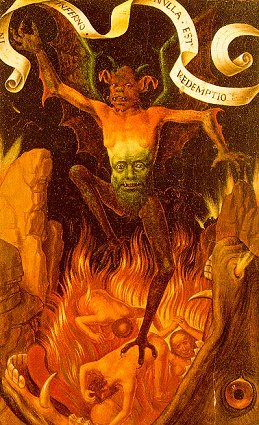 Full sight the dragon fire burning the sheeple  Orthodox Crozier - Dragon vs Sheeple - Spiral Shamrock = Shem rock - Shem priest philosopher stone which is Zinc - three borromean rings of the Lord  The Borromean Rings are three interlocking circles that symbolize the Christian trinity  Molecular Zinc borromean ring and the hexagon embeded Sinc-Lair dragon code Sinc- chronicity from Kronos - Saturn father of time  Two towers Jachin and Boaz and the eye of the cat - Lord of the borromean rings of fire - Belcebu the Lord of the flies - rotten egg H2S.  Inside the octagonal hypercube 15 = 1111 - below right the spirals Lets go to the film minute 1.07 mon-key moon galactic singularity fractal code  Watch out for me I am pure evil I am Christ-ine http://www.youtube.com/watch?v=4JFxTlCsXrs&feature=related |
|
|
|
Rispondi |
Messaggio 18 di 140 di questo argomento |
|
|
|
|
Rispondi |
Messaggio 19 di 140 di questo argomento |
|
 13.000 dead predicted by the David Scarab Rockefeller foundation at London Olympic games together with the planet final Bankrupt. 13.000 - 13 based and the occult Zodiac doomsday number of Ophiuchus the serpent. The question comes to be, will CCTV Israel based company cameras work after the 7/7 Metro bombing failure ? http://www.guardian.co.uk/world/video/2 ... pics-videoQuote : http://www.rockefellerfoundation.org/up ... 7cc719.pdf HACK ATTACK An economically unstable and shock-prone world in which governments weaken, criminals thrive, and dangerous innovations emerge Devastating shocks like September 11, the Southeast Asian tsunami of 2004, and the 2010 Haiti earthquake had certainly primed the world for sudden disasters. But no one was prepared for a world in which large-scale catastrophes would occur with such breathtaking frequency. The years 2010 to 2020 were dubbed the “doom decade” for good reason: the 2012 Olympic bombing, which killed 13,000, was followed closely by an earthquake in Indonesia killing 40,000, a tsunami that almost wiped out Nicaragua, and the onset of the West China Famine, caused by a once-in-a-millennium drought linked to climate change. Not surprisingly, this opening series of deadly asynchronous catastrophes (there were more) put enormous pressure on an already overstressed global economy that had entered the decade still in recession. Massive humanitarian relief efforts cost vast sums of money, but the primary sources—from aid agencies to developed-world governments—had run out of funds to offer. Most nation-states could no longer afford their locked-in costs, let alone respond to increased citizen demands for more security, more healthcare coverage, more social programs and services, and more infrastructure repair. In 2014, when mudslides in Lima buried thousands, only minimal help trickled in, prompting the Economist headline: “Is the Planet Finally Bankrupt?” http://www.rockefellerfoundation.org/up ... 7cc719.pdfhttp://www.rockefellerfoundation.orgNote how this scarab is saved under the 1111 code in Forbes magazine  http://images.forbes.com/media/2010/11/11/1111_beetles-david-rockefeller_390x220.jpg http://images.forbes.com/media/2010/11/11/1111_beetles-david-rockefeller_390x220.jpg The Lion/cat beast Saturn/Orion 6 marriage with the beauty Venus/ Isis 9 begat Horus the beast child or the antichrist. 9 + 6 = 15 = 1111 binary 9-11 galactic center coordinates towards the solar system in El sun God even symmetry key of the rhombic dodecahedron.
|
|
|
|
Rispondi |
Messaggio 20 di 140 di questo argomento |
|
EL MISMO NOMBRE CATOLICO TIENE CONNOTACION GALACTICA EN FUNCION A LA CONSTELACION (OJOS DE GATO)
CAT/GATO
GATO/ GATE (PUERTA)
Nebulosa Ojo de Gato
De Wikipedia, la enciclopedia libre
La nebulosa Ojo de Gato (NGC 6543) es una nebulosa planetaria en la constelación del Dragón. Estructuralmente es una de las nebulosas más complejas conocidas, en la que las imágenes de muy alta resolución del Telescopio Espacial Hubble han mostrado notables estructuras como nudos, chorros de material, burbujas y estructuras en forma de arco.
Fue descubierta por William Herschel el 15 de febrero de 1786 y fue la primera nebulosa planetaria cuyo espectro fue investigado, siendo esta labor realizada por el astrónomo William Huggins en 1864.
|
|
|
 Primo Primo
 Precedente
6 a 20 de 140
Successivo Precedente
6 a 20 de 140
Successivo Ultimo
Ultimo
|

